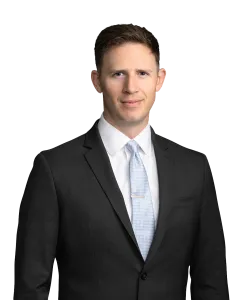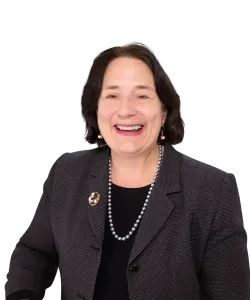Trending in Tort Law Part II: Courts Address the Growing Use of Public Nuisance in Mass Torts
Since prescription opioids were first introduced for pain treatment in the 1990s, the number of drug overdose deaths has quadrupled, and more than a half million Americans have died from an overdose involving an opioid.[1] The CDC has labeled this an epidemic, and most agree that it is a public health crisis. But courts are divided over whether this crisis is legally a public nuisance. As appellate courts issue decisions and trials across the country reach verdicts, the contours of tort law are being reshaped and defined — specifically the applicability of public nuisance in product liability and mass torts cases.
Public Nuisance and Mass Torts
As we previously explained in Part I of this two-part installment on the use of public nuisance in product liability claims, a public nuisance is “an unreasonable interference with a right common to the general public.”[2] With its roots in the common law, states interpret public nuisance claims differently. For example, most states require the interference to be abatable — that is, capable of being remedied — but California does not.[3] Additionally, courts often disagree as to whether the right at issue is a public or private right.[4] And only a public right can be the basis of a public nuisance action.
Over the past few decades, plaintiffs have attempted to expand the public nuisance theory in various mass tort contexts with little success. This included claims against suppliers of asbestos, tobacco, firearms, and lead paint. Most claims failed either because the right at issue was individual — not public — or because the products were no longer within the suppliers’ control (and hence not abatable).[5]
In the past few years, various government entities have filed many public nuisance lawsuits against opioid suppliers (manufacturers and distributors) and also the distributing pharmacies. As in previous public nuisance mass tort cases, control over the source of the harm has played a key role. Courts have also focused on government evaluation and approval of opioids.
California and Oklahoma Courts Reject the Public Nuisance Theory of Liability for Drugmakers
People v. Purdue Pharma L.P. (California)[6]
In November, a California Superior Court ruled that Santa Clara, Orange, and Los Angeles counties and the city of Oakland failed to prove an actionable public nuisance by the defendant manufacturers.[7] Under California law, a public nuisance requires that defendants cause “a substantial and unreasonable interference” with a “public right.” The court found that plaintiffs failed on both the “unreasonable interference” and “causation” elements.
In California, interference is “unreasonable” if the gravity of harm inflicted outweighs its social utility. In rejecting this claim, the court found that the FDA’s approval of opioids as Schedule II controlled substances prevented a finding of “unreasonable[ness]”. As the court explained, “the Federal government made a determination that the ‘social utility’ of appropriately prescribed opioids outweighed the ‘gravity of the harm inflicted’ by them.”
With respect to causation, California law (the Pain Patient’s Bill of Rights) approves the use of opioids in appropriate circumstances (i.e., “medically appropriate” prescriptions). Thus, without evidence linking the manufacturers’ marketing of the product to a rise in the “medically inappropriate” prescriptions that had led to the addiction crisis, the court could not conclude that the manufacturers had caused the alleged nuisance. Correlation alone—without some evidence of causation—was inadequate.
The court did not reach the issue of abatement, which is a required element in some public nuisance cases but not in California. Instead, its focus was simply on the fact that both the FDA and California “approve[] the use of opioids in appropriate circumstances,” and that plaintiff’s evidence did not permit the court “to draw (and measure)” “a distinction between conduct resulting in anticipated, approved use, and conduct resulting in improper use.”
State ex rel. Hunter v. Johnson & Johnson (Oklahoma)[8]
Just weeks after the California decision, the Supreme Court of Oklahoma overturned a 2019 verdict — awarded to the State of Oklahoma — that had imposed $465 million on opioid manufacturers under a public nuisance theory. Unlike California, the trial court found causation: “The increase in opioid addiction and overdose deaths following the parallel increase in opioid sales in Oklahoma was not a coincidence; these variables are ‘casually linked.’”[9] On appeal, however, the Oklahoma Supreme Court categorically rejected use of public nuisance to cover the manufacturing, marketing, and selling of products. The court outlined three primary reasons for this decision.
First, the court rejected the State’s categorization of the right at issue as public rather than private. The claims were not similar to “communal” public health claims, such as “pollution in drinking water” or “discharge of sewage on property.” Those sorts of public nuisance claims are very different, the court reasoned, from recognizing a “public right” that individuals not misuse or abuse prescription opioids. The State’s theory would mean, for example, that product suppliers could be potentially liable for individual misuse of all sorts of legal products—a vast and unwarranted expansion of product liability.
Second, the court found that the manufacturers’ lack of control of the product at the time of the nuisance also precluded liability. The court essentially combined both the causation and abatement elements. The manufacturers could not have caused a nuisance because they did not control how others distributed the product, how the law regulated distribution, or how the product was prescribed by doctors or used by patients. And, without that control, the manufacturers could also not abate the nuisance.
Finally, imposition of liability for public nuisance would subject manufacturers’ to perpetual liability. Unlike product liability claims, there are no statutes of limitations for nuisance claims (since, in theory, a nuisance is ongoing). Because Oklahoma law had rejected endless liability in all other traditional tort theories, the court did so here as well.
Ohio and New York Juries Find Defendants Liable Under Public Nuisance Theory
While the California and Oklahoma decisions show defendants’ success in curtailing the expansion of the public nuisance doctrine, the success has not been universal. In November, a jury, rather than a judge — in a bellwether by two Ohio counties in the opioid multidistrict litigation in Ohio federal court — found that several nationwide pharmacy chains had “engaged in intentional and/or illegal conduct [that] was a substantial factor in producing the public nuisance.” While the remedy will not be decided until later this year, the pharmacies have vowed to appeal. They claim that the court erred by allowing the jury to evaluate the public nuisance theory, which they contend is inconsistent with Ohio law.
It is not clear why the Ohio result was so different — whether it was because a different entity — pharmacies — were the defendants, or whether the evidence was different, or simply because it was because a jury, rather than a judge, that was charged with applying the public nuisance theory to the facts presented. We will have to wait for the appellate decision (assuming that the case is eventually appealed).
Finally, at the end of December, a New York jury found drugmaker Teva Pharmaceuticals liable for having created a public nuisance in Suffolk and Nassau counties as well as the state as a whole. The verdict came after numerous other defendants settled out of the case for millions of dollars each. The jury also allocated 10% of the responsibility for the opioid crisis to the State of New York. Teva has said it is preparing to appeal the verdict, and as in the Ohio case, damages will be determined later this year.
Key Takeaways
Based on these recent decisions, it seems clear that public nuisance has not—and likely will not ever—become a complete replacement for mass tort and product liability actions. As the Oklahoma Supreme Court put it, “[p]ublic nuisance and product-related liability are two distinct causes of action, each with boundaries that are not intended to overlap.”
But the use of public nuisance in mass torts will still likely continue. If allowed, public nuisance theory provides a way for governmental entities (such as a state or a county) to seek mass damages without individualized proof of duty, causation, and damages. Two other trials, from coast to coast, are also set to consider the issue soon — a bench trial in federal court in West Virginia that concluded this past summer and a bench trial in Washington state court that is ongoing. The risks to the defendants are enormous, as the Oklahoma verdict showed. And those risks often lead to large settlements before trial, again as the Oklahoma litigation demonstrated.[10] Nevertheless, there are a few key takeaways from these decisions:
- First, it is more difficult for plaintiffs to prove the “unreasonable” prong of public nuisance where the product is highly regulated for safety and production and distribution is authorized by law. This was one of the main reasons that the California court declined to find the manufacturers liable.
- Second, causation requires just that, causation — inferential correlation alone is insufficient in public nuisance cases. Where there are multiple intermediaries between the manufacturer and the end user and/or the alleged nuisance, plaintiffs will likely struggle to prove causation. Furthermore, other factors giving rise to the opioid crisis — such as the use and abuse of illegally imported opioids — also make it more difficult for plaintiffs to prove that manufacturers, distributors, or pharmacies directly caused the public nuisance.
- Finally, the abatement element of public nuisance theory also presents some difficulties. Because the defendant does not control the product at the time the harm takes place, the defendant cannot “abate” the nuisance. In the Oklahoma opioid litigation, for example, damages sought from the defendants were earmarked for such things as government-run addiction treatment and prevention programs. Unlike an injunction that orders a noise polluter to stop, however, there is no certainty that these programs will actually remedy the alleged nuisance, and they have very little connection to the damage a particular defendant allegedly caused. This again highlights the difficulty of applying public nuisance theory to what are, in essence, product liability claims.
[1] Understanding the Epidemic, Centers for Disease Control & Prevention (Mar. 17, 2021), https://www.cdc.gov/opioids/basics/epidemic.html.
[2] Restatement (Second) of Torts § 821B (1979).
[3] People v. ConAgra Grocery Prods. Co., 17 Cal. App. 5th 51, 109 (2017).
[4] Compare In re Nat’l Prescription Opiate Litig., No. 1:17-MD-02804, 2019 WL 2468267, at *30-32 (N.D. Ohio Apr. 1, 2019), report and recommendation adopted in part, rejected in part, No. 1:17-MD-2804, 2019 WL 3737023 (N.D. Ohio June 13, 2019) (holding the right to be free from unwarranted addiction is a public right), with City of Chicago v. Beretta U.S.A. Corp., 231 Ill.2d 351, 370–75 (2004) (holding the right to be “free from unreasonable jeopardy to health” is a private right).
[5] See, e.g., Tioga Pub. Sch. Dist. No. 15 v. U.S. Gypsum Co., 984 F.2d 915, 920-22 (8th Cir. 1993).
[6] People v. Purdue Pharma L.P., No. 30-2014-00725287-CU-BT-CXC (Super. Ct. Cal. Nov. 1, 2021).
[7] The court finalized its decision on December 14, 2021, overruling all 50 of the plaintiffs’ objections.
[8] State ex rel. Hunter v. Johnson & Johnson, 2021 OK 54.
[9] State ex rel. Hunter v. Purdue Pharma L.P., No. CJ-2017-816, at ¶ 54 (Okla. Dist. Ct. Aug. 26, 2019).
[10] For example, news reports state that Oklahoma collected over $370 million dollars in pretrial settlements from opioid manufacturers and distributors. See Kassie McClung, Most of the Money Oklahoma Secured from Opioid Companies Has Gone Unspent, Frontier (July 8, 2021), https://www.readfrontier.org/stories/most-of-the-money-oklahoma-secured…. Only Johnson & Johnson proceeded to verdict in that case.
Contacts
- Related Industries
- Related Practices

